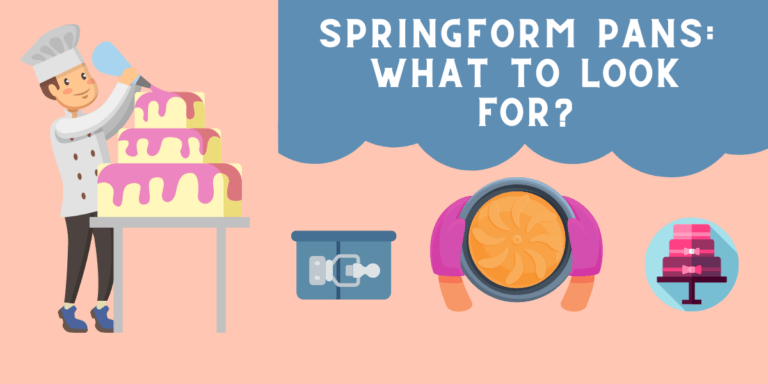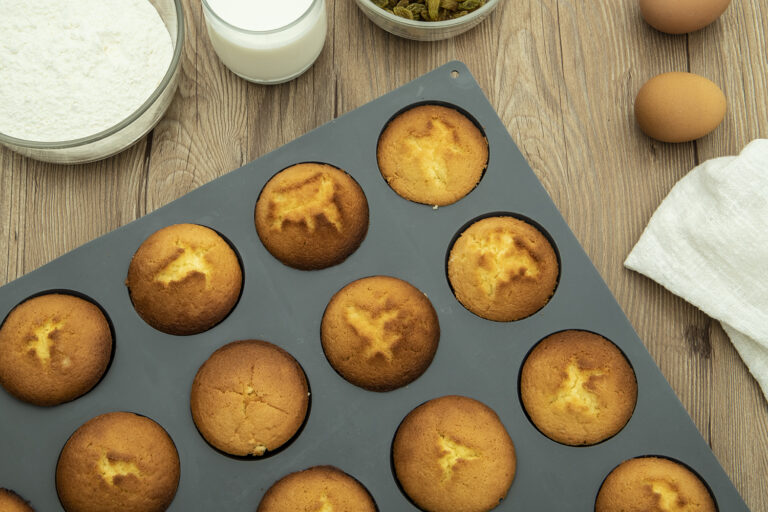Everything you need to know about food safe silicone before your first purchase
Silicone bakeware is all the rage these days. It’s easy to use, attractive and has low environmental impact.
But not everyone knows how safe silicone is for food preparation-especially those who purchase it online without reading reviews or comparing prices first!
Before buying anything in a store, read this article to make an informed decision about your next silicone utensil purchase.
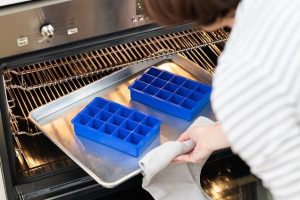
What is food grade silicone?
Is silicone plastic? Food grade silicone is a type of silicone that is specifically designed for use with food. It is made tough and resistant to weather conditions and certified by the NSF. This makes it a safe material to use in the kitchen.
In addition, silicone kitchenware that has been certified as “food safe” by the NSF-51 standard undergoes rigorous third-party testing. This certification guarantees the product is free of harmful chemicals such as BPA, lead, latex, and phthalates. The material is also considered non-hazardous waste and environmentally friendly.
Silicone (or polydimethylsiloxane) is a manmade polymer and the product of Silica and Carbon when heated together at high temperatures. Silicone is a completely synthetic rubber and a relatively hybrid material as it is formed from organic compounds of Hydrogen and Carbon, known as hydrocarbons.
Some key properties in silicone rubber products:
- High and low heat resistance
- Chemical resistance
- High compressibility
- High elasticity
- Water repellency
Silicone can be transported from the temperature of a freezer to that of a hot oven without undergoing any structural changes, which may affect its performance as a silicone mold.
The number of silicone food applications encountered in everyday life is incredible. From airplane engines to swimming goggles, silicone seals and coatings are found in just about every corner of consumer life. The impressive chemical, thermal and mechanical properties of silicone makes the material highly durable, so it is little wonder that it has been widely adopted by many industries, not least the food industry.
How safe is food grade silicone?
Silicone is a healthier, more inert alternative used in food and beverage applications. Silicone is resistant, nonporous, and has a broad temperature range. Silicone is a healthier, more inert alternative to plastic for food and beverage applications. Vanguard produces silicone prodvariousariety of applications, including food grade silicone extrusions and tubing. Vanguard’s silicone products are highly precise and cost-effective. Vanguard has its operations and custom compound formulations to create silicone products.
The FDA (Food & Drug Administration) is responsible for the regulation of the food and pharmaceutical industries to protect the public from food and drug hazards. Although the FDA is a body of the US government, and its jurisdiction only applies in the United States, its principles and regulations are adopted as a recognizable worldwide standard.
Silicone’s resistance to temperatures and chemicals ultimately means that it does not react with foodstuffs or any other media encountered in the process line. The use of silicone sealing, therefore, does not result in any hazardous byproducts which could adversely affect the health of the workforce or end consumers. This is important when considering silicone as a ‘food safe’ material.
However, according to their Food Code, a material is only considered ‘food safe’ if it is FDA compliant, which means ‘acceptable to the regulatory authority [FDA] based on a determination of conformity with principles, practices and generally recognized standards that protect public health. While the characteristics of silicone make it highly durable and resistant, there is no automatic universal ‘approval’ of all silicone products or manufacturers.
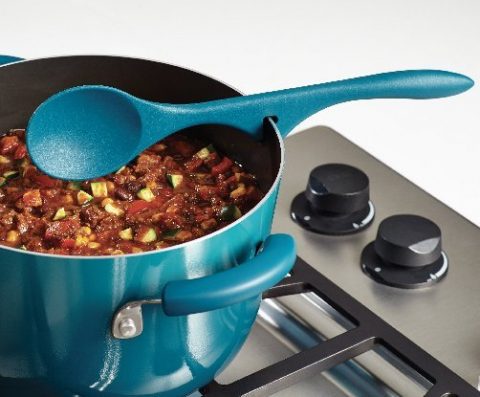
What is food grade silicone made of?
Silicone is a synthetic made up of silicon, oxygen, and other elements. It is durable and resistant to chemical leaching. Silicone has a broad temperature range, making it ideal for food and beverage application. Vanguard manufactures food grade silicone products using highly precise processes and custom compound formulations. Vanguard is a one stop shop for all your silicone needs, including food grade silicone rubber extrusions, tubing, and molded products.
What are the benefits of using food grade silicone?
Food grade silicone is a type of silicone that is specifically designed for incidental food contact. It is a versatile and durable material that is resistant to damage. This makes it a popular choice for kitchenware, as it can be safely used to cook food without the risk of contamination.
Silicone kitchenware is a great option for those looking for an alternative to traditional materials like stainless steel and aluminum. Food grade silicone is non-toxic, safe to use in the oven, microwave, or dishwasher, and can withstand high and low temperatures.
One of the benefits of using food grade silicone is that it’s NSF-51 certified. This means that the silicone has been deemed safe for use with foods by a leading public health and safety authority.
In addition, silicone is a safe material to use in the kitchen. It is odorless and contains no harmful chemicals such as BPA, lead, latex, or phthalates. This makes it a safer option than other materials that may release harmful toxins when heated.
How can you use food grade silicone in the kitchen?
Food grade silicone is a popular material for kitchenware because it is tough and durable. It can withstand high and low temperatures without breaking or warping, making it a suitable material for everyday use. Additionally, food grade silicone is NSF-51 certified, meaning that it meets all the requirements for safety and sanitation in the food industry. It is also damage resistant, meaning it will not scratch or chip easily.
In addition, silicone kitchenware is a safe option when purchasing new kitchen supplies. The NSF-51 certification guarantees that the material has been tested for safety and meets all requirements. The material is odorless and contains no harmful chemicals like BPA, lead, latex, or phthalates. Additionally, the material can be disposed of as non-hazardous waste and is environmentally friendly.
Food grade silicone is often used to make molds of nonfood items for later use as molds to cast food items into the shape of the initial nonfood item. The rubber molding make shapes out of chocolates, butter, gelatin, cheese, and candies. Food grade silicone is also used in food processing and packaging to keep foods from coming into contact with unsanitary surfaces while transported across assembly lines. In addition, hunters and butchers use lubricant food grade silicone to prevent rusting in grinding and cutting machines because it is safe for consumption.
Food grade silicone can be found in various forms to make it more practical for the different uses and jobs it is capable of taking on.
Food grade silicone is found in a tube that often resembles cake icing and can be squeezed onto the objects to be molded. It may also be found as a thinner liquid, which must be mixed and poured over the cast objects. Some food grade silicone can be found in a thick consistency, much like clay; this type is used for small, typically flat objects that can be pressed into the silicone to create the mold. Another form of food grade silicone is the aerosol or liquid form used primarily as a lubricant in food packaging and to protect the food from the introduction to toxic or unclean conditions.
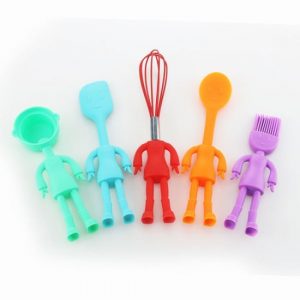
How do you know these silicone molds are food safe?
As you probably know, silicone is a synthetic polymer that has a wide range of applications. It’s used in everything from medical devices to electrical insula and food storage. But what you might not know is that there are different grades of silicone, and not all of them are safe for use with food. So, how can you tell if a silicone product is safe to use in the kitchen?
The first thing to look for is FDA approval. Any food grade silicone product will have an FDA approval symbol on it. This means that the product has been tested and approved by the US Food and Drug Administration for use with food.
Another way to tell if a silicone product is safe for use in the kitchen is by looking for the words “food grade” or “FDA approved” on the label. This product testing ensures that they meet safety standards for contact with food.
If you’re still unsure, you can always contact the manufacturer directly and ask about their products’ safety for use with food. They should be able to give you more information about their testing and certification process.
So, now that you know what to look for go forth and safely enjoy your Silicone products!
However…
As an aerosol or liquid, food grade silicone is flammable when exposed to direct flame, so this type should be avoided in applications requiring such exposure. Food grade silicone in clay-like form and those used to make molds are registered for safe use in temperatures up to 450 degrees Fahrenheit. Users should read specific instructions for each type to use them properly and without problems.
What are some other uses for food grade silicone?
Silicone can be used for a wide variety of purposes. It is most commonly found in cooking utensils because it conducts heat well and doesn’t react with food. Some uses for silicone in the kitchen include sealing containers and pans to prevent food from sticking, creating a waterproof seal for baking or storing raw meat, and making molds for ice cream. Silicone can also be used as an adhesive, sealant, or lubricant. It is also used in various products that require flexibility and durability, such as shoes and car parts.
How do you clean food safe silicone molds?
If you’re using food safe silicone molds, you’ll want to make sure you clean them properly. Here are some tips on how to make a silicone mold squeaky clean without too much effort:
Silicone molds can be easily cleaned with warm soapy water. There is no need to use boiling water just to remove residue. Food grade silicone spray is much easier to wash away than regular cooking spray.
Do not place a platinum silicone mold in the dishwasher, unless otherwise stated by the manufacturer that it is dishwasher safe.
A silicone mold can be demolded and used again once washed.
So why choose silicone over plastic?
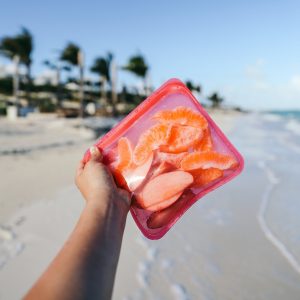
- Plastic is made with carcinogenic and endocrine/hormone disrupting chemicals that, in certain amounts, can cause adverse effects. At the same time, silicone is chemically inert, non-toxic, and will not leach into food or drink.
- Plastic, while it can last a lifetime (actually, on average, 450 years), is prone to damage such as scratches and cracks, with items often being disposed of within a few years. (We’ve all owned a plastic sandwich/Tupperware box, they never lasted very long before the lid cracked or the container became discolored!) Silicone is a more durable, flexible material that can withstand extreme temperatures without degrading.
- Plastic, due to scratches on the surface, can harbor germs. Silicone is hypoallergenic and will not harbor bacteria.
- Best Makeup Organizer to Keep Your Vanity Table Clean and Coordinated - December 28, 2022
- Silicone Universal Lid: What are silicone lids used for? - November 28, 2022
- Felt products: A stylish and economic way of keeping your house cozy and neat - August 30, 2022



